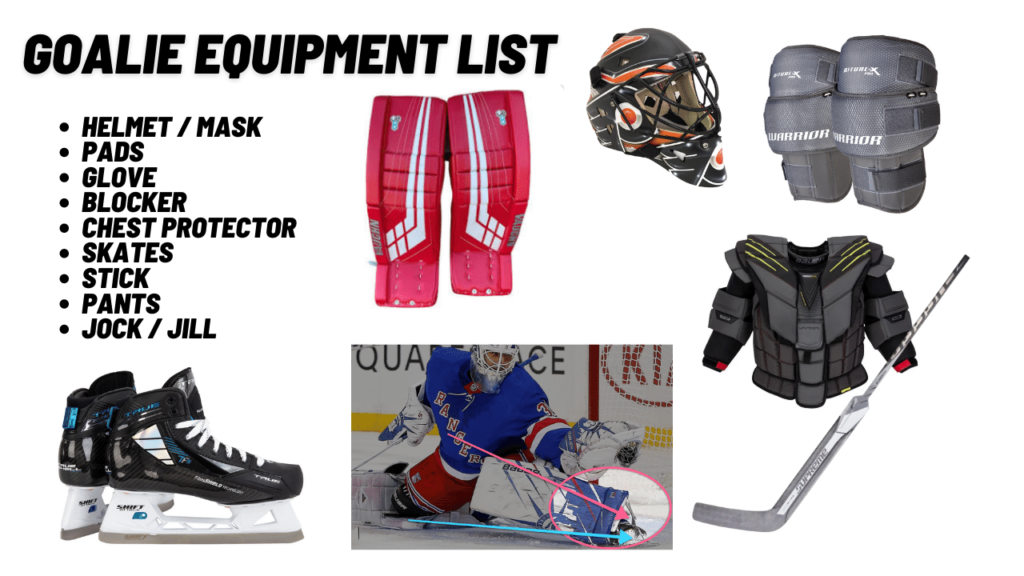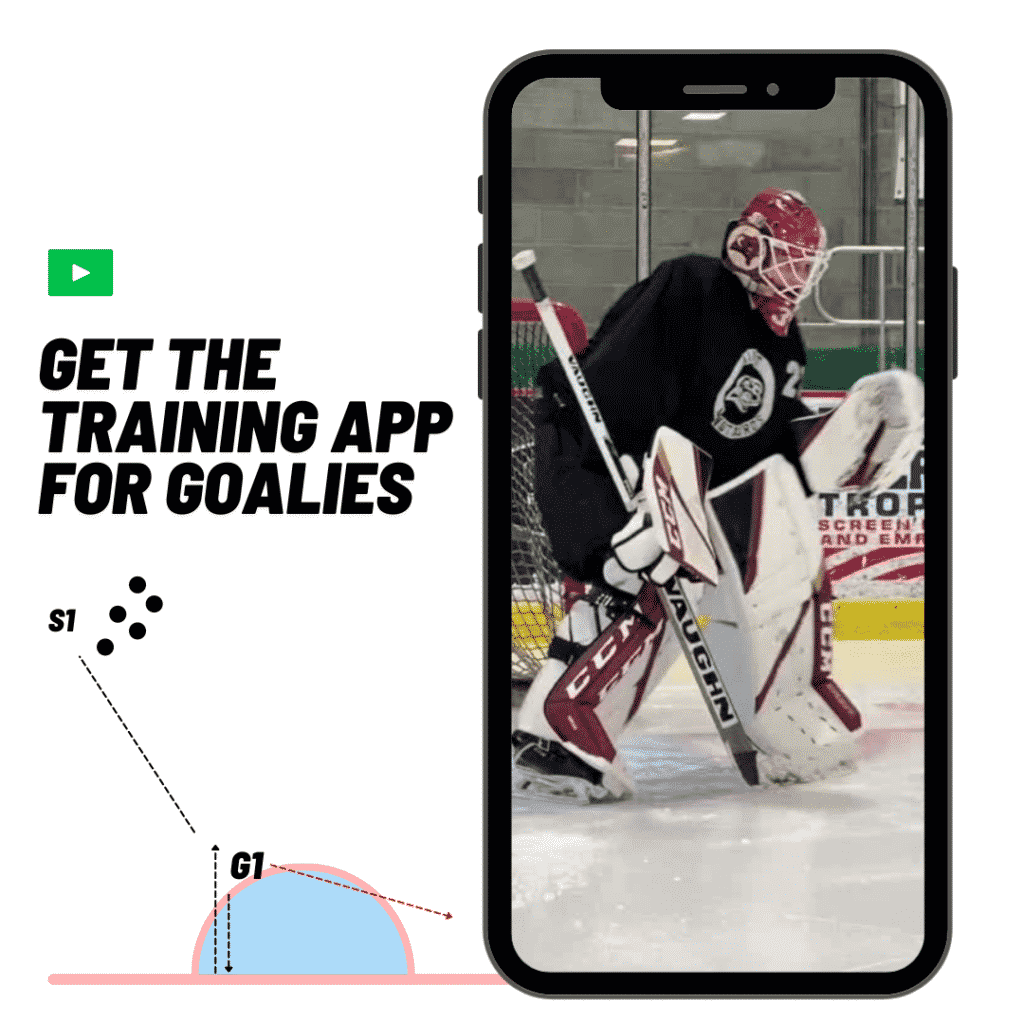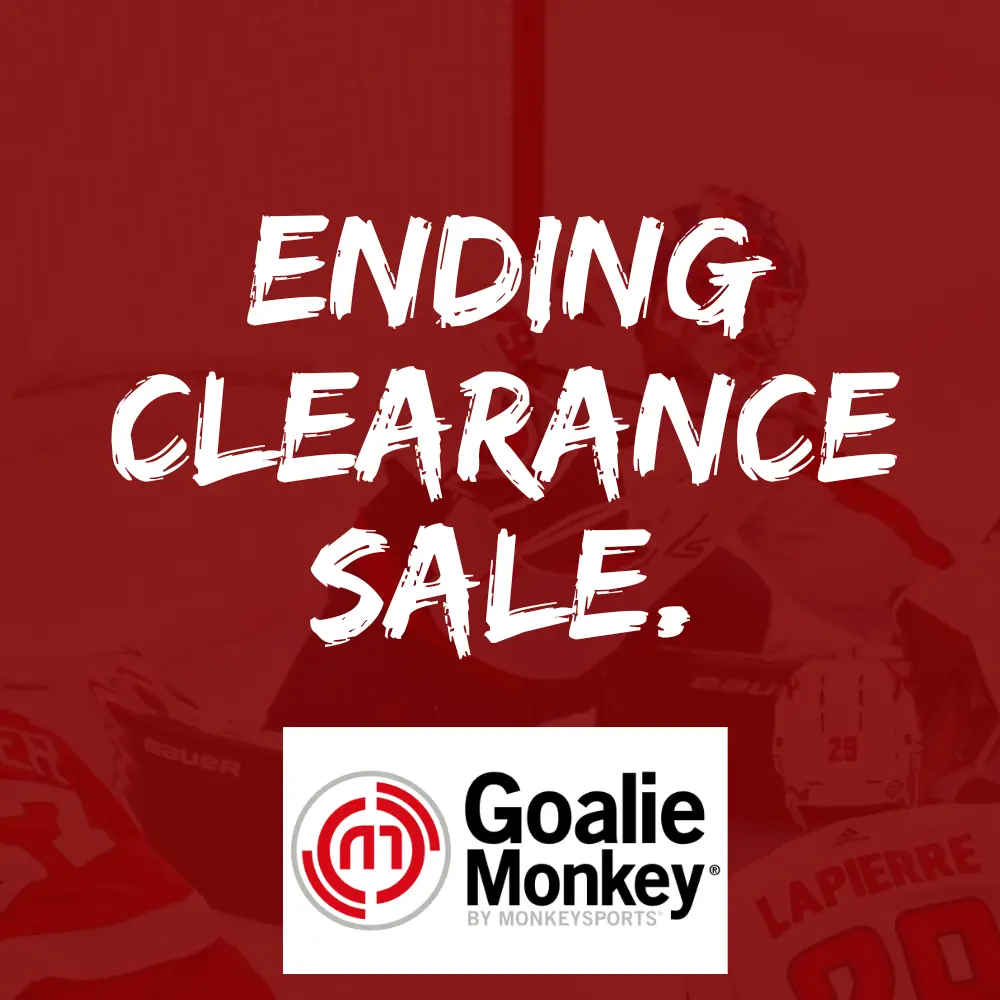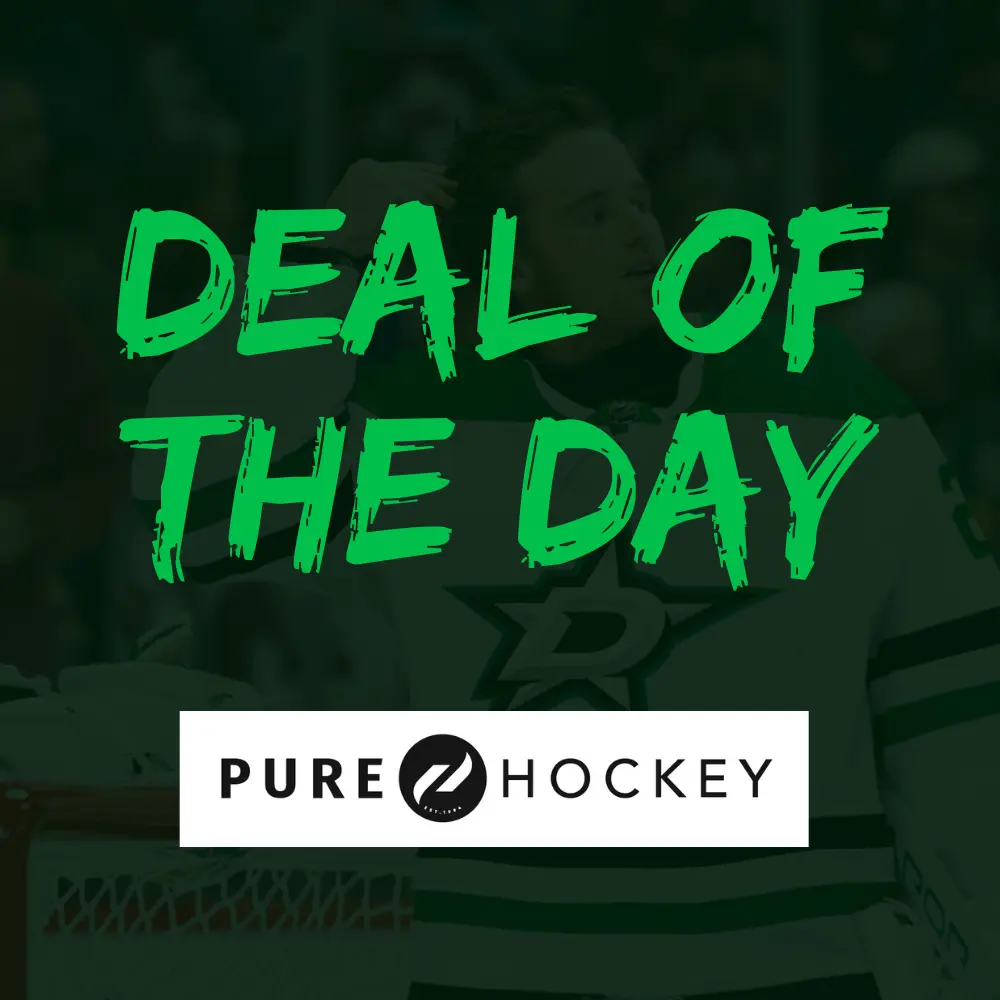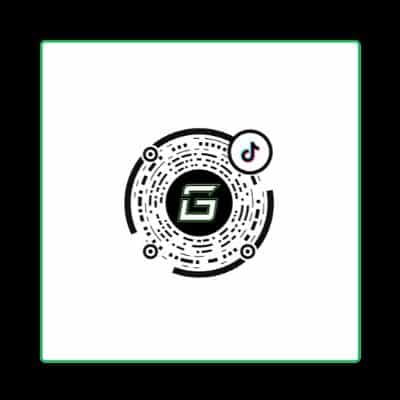Of any position in hockey, goalies wear the most protective (and also most expensive) pieces of equipment. While many question the sanity of a person who willingly puts themselves in the path of a puck shot at up to 100 miles per hour, goalies are actually very well protected and it’s a very safe position.
If you’re a new goalie parent questioning your son or daughter’s decision, have no fear. Modern-day goalie equipment is highly protective, designed to ensure a fun and safe experience for everybody playing the position.
Becoming a goalie is one of the most exciting journeys you’ll embark on. You’re playing the single most physically demanding position in sports. At the same time, I can personally assure you that you will not find a position more enjoyable. From the ups of shutouts to the downs of giving up several goals in a row, playing goalie is one of the most rewarding things I’ve ever done.
With that being said, the goalie equipment list is extensive.
Quick Overview: What Do Hockey Goalies Wear?
Additional under-layer protection includes knee pads (optional but recommended), padded compression gear, and moisture-wicking base layers.
Understanding Stock vs Custom Goalie Gear
Before we dive into each piece of equipment, let’s talk about an important decision you’ll face: stock versus custom gear.
If you’re just getting started playing goalie, you’re going to first want to determine your pad size. If you’re thinking about ordering custom goalie gear, you’re going to want to learn about the possible goalie gear specs prior to your order.
For custom pad orders, researching some of the possible goalie pad modifications out there is a great idea prior to ordering your new gear. Modifications and stock or custom gear specs are the name of the game for goalies and their customized gear.
For those interested in ordering stock goalie gear, learning what specs are out there is a good idea, but not a requirement. Simply because a piece of gear is labeled as “stock” doesn’t mean it’s lower quality than customized gear. In fact, if you haven’t specifically used a gear spec you’re thinking about customizing, you probably should just stick with the stock option.
Goalie pad manufacturers build pads as “stock” because the majority of goalies, including goalies at the NHL level, like the specifications. Stock specs, when it comes to goalie gear, mean they’re most likely to work for you.
Where to Buy New Goalie Gear
The top two places to order new goalie gear are Goalie Monkey and Pure Goalie. This is due in large part to their superior return policies and the ability to order fully custom or stock gear.
Complete Goalie Equipment Breakdown
1. Goalie Helmet (Mask)
Your helmet is arguably the most important piece of equipment you’ll own. Never compromise on brain protection—this should be where you invest the most money.
What to Look For:
- HECC certified helmets are mandatory for USA Hockey and Hockey Canada events
- Must use a certified cage (straight bar or cat-eye certified)
- Proper fit is critical: helmet should be snug with no movement when you shake your head
- Consider protection level, weight, and visibility
Cage Options:
- Certified straight bar: Maximum protection, standard for all levels
- Certified cat-eye: Better visibility while maintaining safety standards
- Non-certified cat-eye: Not allowed in sanctioned play—the eye holes are large enough for a stick blade to slip through
Pro Tip: Buy your helmet new. Used helmets may have compromised protection from previous impacts, and you won’t know the history. This isn’t the place to save money.
For sizing guidance, check out our goalie helmet sizing guide.
Cost Range: $200-$800 (invest in the upper range for better protection)
2. Throat Protector & Neck Guard
Every helmet requires a throat protector. These plastic danglers attach to your cage and protect your throat from pucks and sticks. Most modern helmets come with attachment points built in.
Types:
- Plastic dangler: Attaches to cage, provides rigid protection
- Neck guard bib: Worn under chest protector, offers wraparound protection
Many chest protectors leave extra room at the top to enable looking down when necessary. Consider wearing a separate neck guard underneath the chest protector for additional protection to the neck and collarbone area.
Cost Range: $15-$40
3. Leg Pads
Leg pads are the most iconic piece of goalie equipment. They protect everything from just above your toe to your thighs, and are designed to help you cover more net while supporting your butterfly technique.
The Six Main Brands: There are six main brands of goalie pads and equipment: CCM, Bauer, Vaughn, Brians, True (Lefevre), and Warrior. All of these brands have different lines for different styles of play.
Understanding Pad Styles:
Hybrid/Soft Face Pads (CCM Eflex, Bauer Vapor):
- Softer internal foams
- Better for save-and-smother style
- Pucks tend to stay close or “die” on contact
- Great for goalies who control rebounds rather than directing them
Long Rebound/Flat Face Pads (Vaughn, Bauer Supreme):
- Harder packed internal foams
- Designed to kick pucks into corners
- Better for aggressive, athletic styles
- Help drive play away from the crease
Sizing Guidance: If you are just getting into being a goalie, I would recommend going to a hockey store and checking out all the different types of pads they offer. There they will also size you up correctly to make sure that you get the best fitting pad possible.
Pads are sized numerically (26″, 28″, 30″, 32″, 34″, 36″+) based on your height and playing style. The number refers to the measurement from the toe of the pad to the top of the thigh rise.
Cost Range:
- Youth/Entry Level: $300-$700
- Intermediate: $700-$1,200
- Senior: $800-$2,200+
Featured Goalie Pads
The Bauer Vapor FlyLite goalie pads are the lightest and fastest pads Bauer has ever made. Built for elite mobility and rebound control, the FlyLite line is perfect for reactive goalies who want pro-level performance with next-gen sliding and seal.
4. Catching Glove (Catcher/Trapper)
Your catching glove is the most-used piece of equipment you own. It will wear out faster than anything else, so invest in quality here.
The glove you catch with determines whether you use a right or left-handed stick. Most goalies catch with their left hand, which means they use a left-handed stick.
Important for Former Players: If you were a player before making the switch to goalie, don’t worry too much about what hand you shoot. I myself was a right-handed shot before I became a goalie. I catch with my left hand so I had to relearn how to shoot with a different hand stick. This is much easier than trying to learn how to catch with the opposite hand.
Glove Features to Consider:
- Break angle: How the glove naturally closes (60°, 75°, 90°)
- Pocket depth: Deeper pockets help trap pucks cleanly
- Closure stiffness: New gloves are stiff and require break-in time
Breaking In Your Glove: Heat, moisture, and movement are key. Use hot water, steam, and repeatedly work the glove open and shut. Playing is still the best break-in method, but you can speed things up by wearing it around the house or having it steamed at a pro shop.
Sizing: Gloves come in Youth, Junior, Intermediate, and Senior sizes. Your hand should fit snugly with fingers reaching the end of the finger stalls for full control.
Cost Range: $150-$700
5. Blocker
The blocker is worn on your stick hand and is essential for deflecting shots and directing rebounds. While it’s less customizable than other pieces, it’s still critical to get right.
What to Look For:
- Board shape: Flat boards offer control; curved boards direct rebounds better
- Palm comfort: Should feel secure without restricting stick grip
- Finger protection: Sidewall coverage for index finger and thumb
- Match your set: Blockers should match your glove and pad design/model
Pro Tip: The blocker is often underrated, but a good blocker makes a huge difference in controlling rebound direction and protecting your stick hand.
Cost Range: $100-$500
6. Goalie Stick
Goalie stick selection is all about feel, play style, and proper sizing. Many goalies use too long of a stick because they don’t have to bend down as far to keep it on the ice. But too long opens up large holes when you drop into the butterfly.
The Balance:
- Too long: Opens up your five-hole in butterfly, harder to control
- Too short: Requires more bend to keep stick flat, but better control
- Just right: Stick blade stays flat on ice in your natural stance without forcing you to bend awkwardly
Paddle Length: Measured from the top of the paddle to where it meets the blade. This should match your stance height, not your overall height.
Pro Tip: Keep an eye out for closeout goalie stick sales. Most manufacturers make multiple stick lines each year, and once new products release, retailers discount the previous year’s models significantly. You can save $100+ this way.
Cost Range: $50-$300
7. Chest Protector
Your chest protector covers your arms and entire torso. This is critically important if you’re a beginner goalie—at the start of your career, many pucks will hit you in the chest as you learn to use your gloves and leg pads effectively.
Sizing Matters: If you have a very thin or too-small chest protector, you will get hit in exposed or non-protected areas. This isn’t just uncomfortable—it’ll shake your confidence and make you hesitant in the crease.
What to Look For:
- Proper torso length (shouldn’t overlap with pants or leave gaps)
- Mobile elbow floaters for full arm movement
- Adequate sternum protection
- Collar height that works with your neck guard
Sizing: Chest protectors range from Youth to Senior sizes. Follow manufacturer sizing charts based on your height and weight. The collar should measure about 1.5″ below your natural t-shirt collar and about 1.5″ above the wrist to prevent interference with the glove.
Cost Range: $150-$700
8. Goalie Pants
Goalie pants are not shorts—they’re specialized protective equipment that covers your waist, hips, and upper thighs.
Player Pants vs Goalie Pants: Player pants are okay to use as a beginner but as you progress, you will want to invest in a pair of goalie pants because of the additional padding. Goalie pants offer significantly more protection across the front, hips, and inner thigh areas.
Fit: Goalie pants should be loose around the waist (often with an internal belt) but come down to just above the knee cap. They need to leave room for knee pads and your jock/jill underneath while allowing ample mobility.
Pro Tip: Try on pants with your chest protector, pads, and skates if possible to ensure all pieces work together without gaps or overlap.
Cost Range: $150-$500
9. Jock or Jill
Jocks and jills protect your pelvis area. Getting hit in the pelvis or privates can really injure you without proper protection, so don’t skip this.
Player vs Goalie Models: A player jock or jill will work as a beginner, but goalie-specific models offer protection to the pelvic bone that player versions don’t have. This extra protection matters when you’re dropping into the butterfly repeatedly.
Pro Tip: This is one of the most affordable pieces of goalie gear, yet one of the most important. Don’t cheap out here.
Cost Range: $30-$150
10. Knee Pads / Guards
Knee pads are not necessary to play goalie, but they do protect your knees from being hit with pucks. Being hit in the knee does not feel good—trust me, it has happened to me many times.
I don’t wear knee pads still, just because it’s a comfortability thing. However, knee pads are also known to help save your hips from getting destroyed (which has also happened to me—two hip surgeries at age 19), so I think they would be a good investment.
When to Wear Them:
- If you play butterfly-heavy
- If you’ve had previous knee or hip issues
- If you’re playing at higher competitive levels with harder shots
Cost Range: $30-$100
11. Goalie Skates
Goalie skates are very beneficial compared to regular player skates. They have flatter designed blades that are more helpful when pushing around in the crease, and they have better shot protection. Some skates have a two-piece design where the boot protector/blade holder is removable and replaceable. Many new goalie skates now just have a one-piece design.
Main Skate Brands: Bauer, CCM, and True. Each different model is made for a different size or shape of foot.
Why Goalie Skates Matter:
- Lower cut boot for better mobility
- Flatter blade radius for lateral movement
- Reinforced toe caps for shot protection
- Stiffer boot for ankle support in the stance
For Beginners: Entry-level goalies can start with regular hockey skates to try the position. If you decide to continue, invest in goalie skates—the difference is significant.
Sharpening: Goalie skate sharpening is different from player skates. You’ll want less of a hollow (deeper edge) compared to players. Most goalies sharpen once every 1-2 weeks depending on ice time.
Cost Range: $150-$900
12. Goalie Bag
Finding a good goalie bag is a challenge. If you are going to be a goalie, you are going to need a bigger bag—there is just much larger equipment.
Wheeled vs Carry: I recommend for beginners to get large wheel bags because it makes toting around a lot of equipment much easier. Especially for young goalies, nobody will judge a kid goalie for wheeling around his equipment. It will also take the load off of the parent from carrying the gear to and from the rink.
Cost Range: $100-$400
What to Buy First: Priority List for New Goalies
If you’re buying equipment gradually, here’s the recommended purchase order:
Priority 1 – Safety First:
- Helmet (buy new, spend the most here)
- Jock/Jill (buy new for hygiene)
- Chest Protector
Priority 2 – Core Equipment:
4. Leg Pads
5. Skates (can start with player skates temporarily)
Priority 3 – Hand Protection:
6. Catching Glove
7. Blocker
Priority 4 – Final Pieces:
8. Pants
9. Stick
10. Bag
Optional but Recommended:
- Knee pads
- Throat protector (often comes with helmet)
- Moisture-wicking base layers
Cost Breakdown: What Does It Really Cost?
Entry-Level Setup (New, Youth/Junior):
- Total: $1,000-$1,500
- Good for beginners trying the position
- Mix of entry-level brands
Mid-Range Setup (Intermediate):
- Total: $2,000-$3,500
- Quality equipment for competitive play
- Better protection and durability
Pro-Level Setup (Senior, Top-End):
- Total: $4,000-$6,500+
- Elite materials and customization
- Maximum protection and performance
Cost-Saving Strategies:
1. Buy Used (Except Helmet and Jock): Facebook groups like “Sell Your Goalie Gear” and SidelineSwap offer significant savings. You can often find lightly used equipment for 50-70% off retail.
2. Watch for Sales: Both Pure Goalie and Goalie Monkey hold clearance sales 365 days a year. Previous year models can save you hundreds.
3. Check Local Associations: Many hockey associations have used equipment available or can connect you with families whose kids have outgrown their gear.
4. Start with Essentials: You don’t need everything at once. Many new goalies play their first few practices with borrowed or rental gear to see if they like the position.
Common Beginner Mistakes to Avoid
1. Buying Gear Too Big It’s tempting to buy oversized equipment thinking kids will “grow into it,” but gear that’s too large prevents proper technique development and leaves dangerous gaps in protection.
2. Skipping the Helmet Investment Never buy a cheap helmet. Your brain is worth more than saving $100.
3. Copying NHL Goalie Setups What works for Connor Hellebuyck might not work for you. Focus on fit and comfort over style.
4. Neglecting Proper Pad Strapping Improperly strapped pads cause discomfort, restrict movement, and can lead to injury. Learn the correct strapping method for your specific pads.
5. Not Breaking In Equipment New gloves need break-in time. Don’t wait until game day to discover your catcher won’t close properly.
Youth vs Intermediate vs Senior Equipment
Youth (Ages 6-10):
- Lighter, more flexible materials
- Simpler strapping systems
- Less customization options
- More affordable
- Designed to fit smaller body proportions
Intermediate (Ages 11-15):
- Bridge between youth and adult sizing
- More features than youth equipment
- Better protection for harder shots
- Mid-range pricing
Senior (Ages 15+):
- Most customization options
- Premium materials and protection
- Widest range of styles and brands
- Highest price point
Important: Don’t automatically jump to Senior sizing just because of age. Proper fit matters more than the size category.
Maintaining Your Equipment
Taking care of your gear extends its life and keeps it performing well.
After Every Use:
- Air out all equipment immediately
- Wipe down pads, gloves, and blocker
- Remove moisture from skate boots
Weekly:
- Deep clean chest protector and pants
- Check all straps and buckles
- Inspect helmet for damage
Monthly:
- Clean catching glove interior
- Oil skate rivets and screws
- Check pad strapping system
For a complete cleaning guide, check out: How to Clean Goalie Gear
Final Thoughts
I hope that this guide was helpful in preparing to either start playing goalie, or getting someone else into the position. It truly is the best position in all of sports.
Remember: your equipment is an investment in safety and performance. Don’t rush the process. Take time to try on different brands, talk to other goalies at the rink, and make informed decisions based on your level, budget, and playing style.
The goalie community is incredibly welcoming. Don’t be afraid to ask questions at the rink—most of us love talking about gear almost as much as we love stopping pucks.
Have a great day, all!
